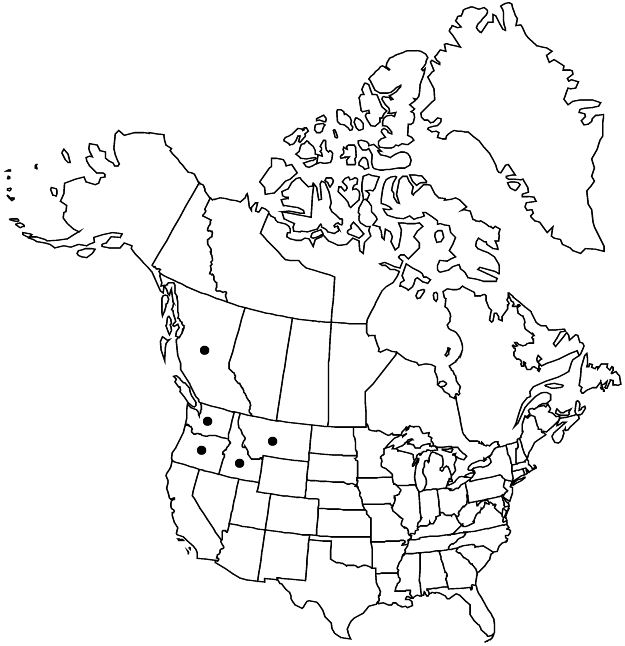familyViscaceae
genusArceuthobium
speciesArceuthobium campylopodum
subspeciesArceuthobium campylopodum subsp. laricis
Arceuthobium campylopodum subsp. laricis
Phytoneuron 2012-51: 9. 2012.
Common names: Larch dwarf mistletoe
Endemic
Basionym: Arceuthobium douglasii var. laricis M. E. Jones
Synonyms: A. laricis (M. E. Jones) H. St. JohnRazoumofskya laricis (M. E. Jones) Piper
Revision as of 00:34, 27 July 2019 by FNA>Volume Importer
Plants forming witches' brooms. Stems green, olive green, maroon, or purple, 4(–6) cm; third internode 5–8(–14) × 1–1.3(–2.5) mm, dominant shoot 1.5–3 mm diam. at base. Staminate flowers 2.7 mm diam.; petals 3(–4). Fruits 3.5 × 2.5 mm.
Phenology: Flowering Jul–Aug; fruiting (Aug–)Sep(–Oct).
Habitat: Coniferous forests, especially with western larch or mountain hemlock.
Elevation: 600–2300 m.
Distribution

B.C., Idaho, Mont., Oreg., Wash.
Discussion
Meiosis occurs in June, with fruits maturing 13–14 months after pollination.
Larix occidentalis and Tsuga mertensiana are the principal hosts for subsp. laricis; secondary to rare hosts include Abies grandis, A. lasiocarpa, Picea engelmannii, Pinus albicaulis, P. contorta, P. monticola, and P. ponderosa. This dwarf mistletoe is a major pathogen on larch in Idaho and Montana.
Selected References
None.
Lower Taxa
None.